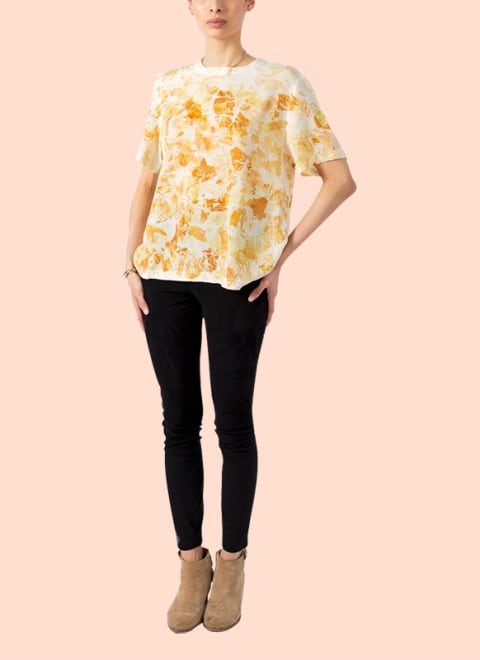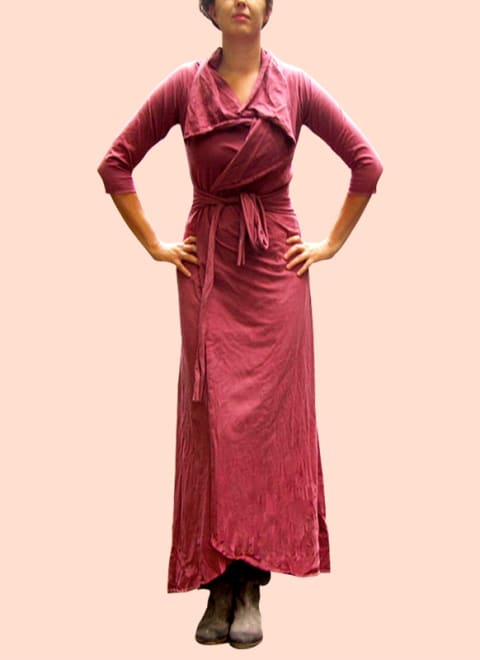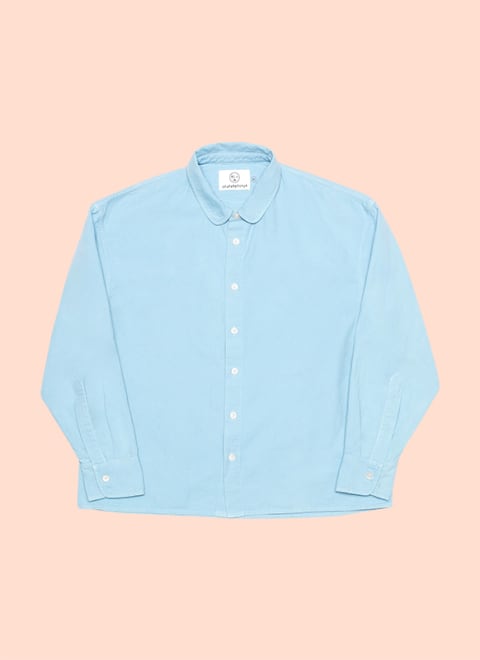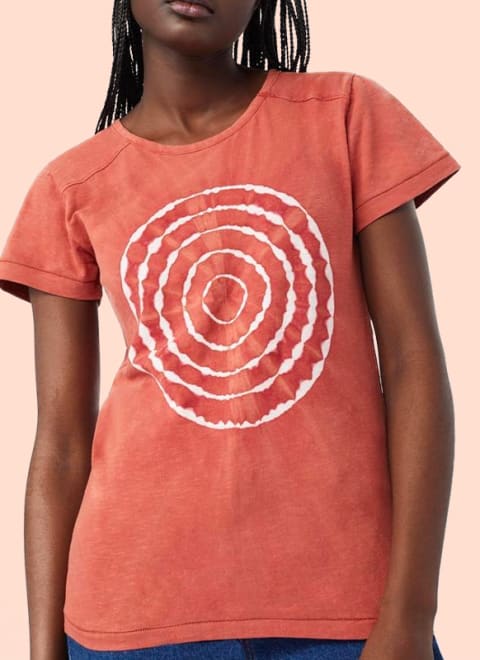And the innovation doesn’t end there. As more consumers start to realize how resource-intensive it can be to color garments, the dying industry is undergoing a cleanup of its own. mbg has been following the rise of plant dying as a more eco-friendly alternative since we first visited Fragmentario, a Brooklyn studio that uses natural and edible material like onion peels and avocado pits as coloring agents, in 2017. While less than 1 percent of clothes on the market are currently made using natural dyes, the practice is slowly starting to gain mass appeal. Large brands like Patagonia are experimenting with ways to incorporate it into its product line; there’s now an entire festival devoted to the craft; and celebrities the likes of mbg Collective member Gisele Bündchen are rocking naturally dyed clothes on the press circuit. “Environmental and personal health concerns are the main reasons people switch to natural dyes,” Katherine Quigley, the founder of plant-dyed organic clothing company Sustain, speculates of the rise in interest. “Conventional clothing uses thousands of chemicals derived from petroleum and is responsible for 17 to 20 percent of global water pollution—a number that is just staggering to think about. And this doesn’t even account for air and other types of pollution released in creating the 140 billion articles of clothing made every year.” Quigley also suspects that the health benefits of natural dyes are swaying public opinion. She herself was inspired to start Sustain after realizing that her wardrobe may have been responsible for her chronic skin rashes. Andrea Crouse, the maker behind another plant-dyed line called Gaia Conceptions, agrees, saying, “Folks are making the same connection around their clothing as they do their food. What you put on your body is just as important as what you put in it.” While natural dying typically requires a lot of plant material and is difficult to implement on a mass scale, a handful of small but mighty companies are championing the eco-friendly practice. Here are a few that will have you going green (or navy, or pink!): Emma received her B.A. in Environmental Science & Policy with a specialty in environmental communications from Duke University. In addition to penning over 1,000 mbg articles on topics from the water crisis in California to the rise of urban beekeeping, her work has appeared on Grist, Bloomberg News, Bustle, and Forbes. She’s spoken about the intersection of self-care and sustainability on podcasts and live events alongside environmental thought leaders like Marci Zaroff, Gay Browne, and Summer Rayne Oakes.








